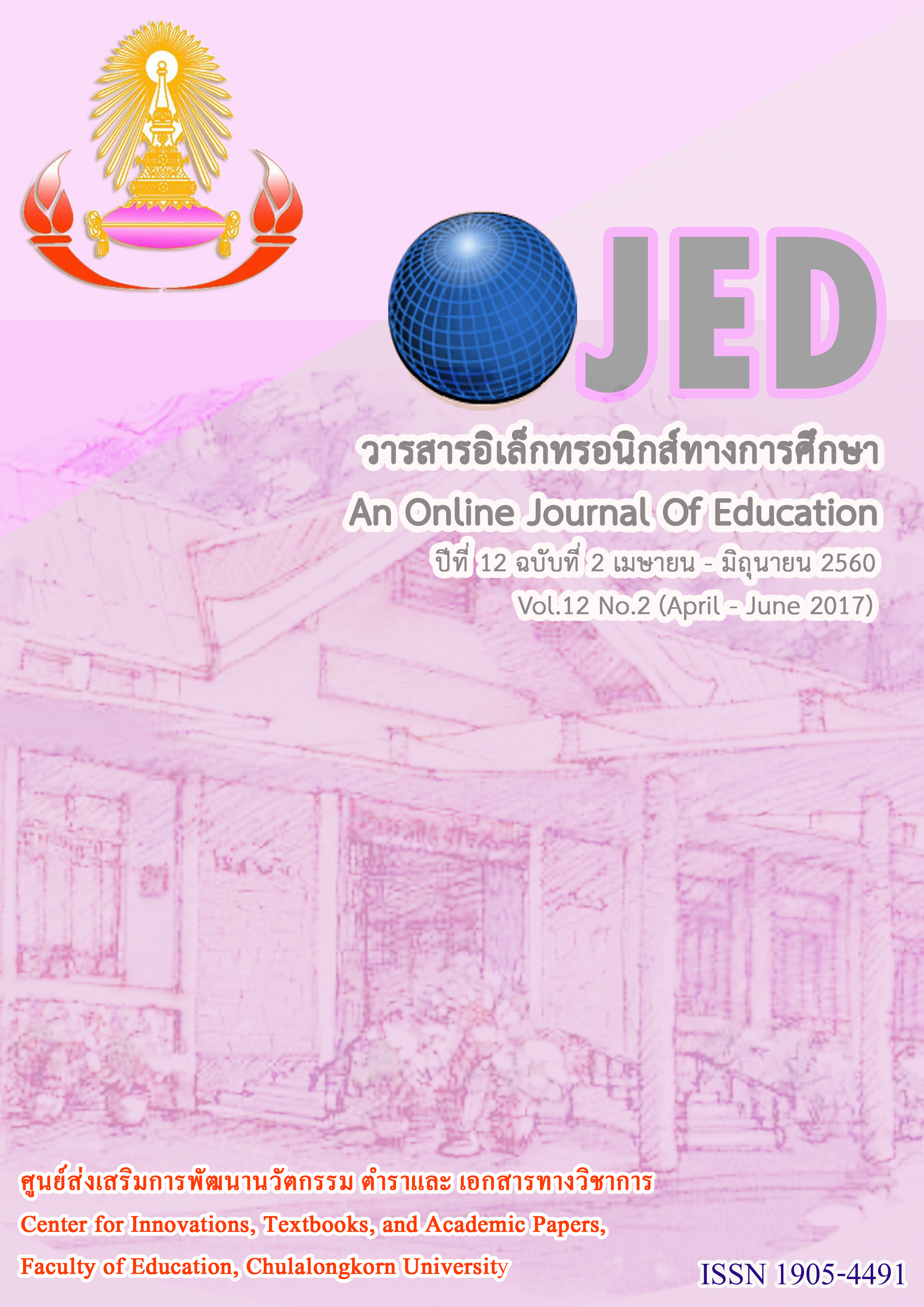ผลของการจัดกิจกรรมการเรียนรู้คณิตศาสตร์ตามรูปแบบวงล้อการคิดอย่างกระตือรือร้น ในบริบทเชิงสังคมและปัญหาปลายเปิดที่มีต่อความสามารถในการแก้ปัญหา และการคิดสร้างสรรค์ทางคณิตศาสตร์ของนักเรียนชั้นมัธยมศึกษาปีที่ 2
Keywords:
THINKING ACTIVELY IN A SOCIAL CONTEXT WHEEL MODEL, OPEN–ENDED PROBLEM, MATHEMATICAL PROBLEM SOLVING ABILITY, MATHEMATICAL CREATIVE THINKING ABILITYAbstract
The purpose of this research were 1) to compare the mathematical problem solving and creative thinking abilities of eight grade students before and after being taught by using thinking actively in a social context wheel model and open–ended problem ; and 2) to compare the mathematical problem solving and creative thinking abilities of eight grade students between the group being taught by using thinking actively in a social context wheel model and open–ended problem and group being taught by using a conventional approach. The subjects were eight grade students in the second semester of the 2015 academic year at Setthabutbamphen school. There were 50 students in the experimental group taught by using thinking actively in a social context wheel model and open–ended problem and 48 students in the control group taught by using a conventional approach. The experimental materials constructed by the researchers were lesson plans using thinking actively in a social context wheel model and open–ended problem, conventional lesson plans, mathematical problem solving ability tests, and mathematical creative thinking ability tests. The results of the study revealed that 1) the mathematical problem solving and creative thinking abilities of experimental group were statistically higher than those of the students before learning at the .05 level of significance ; and 2) the mathematical problem solving and creative thinking abilities of after learning of experimental group were higher than those of control group at the .05 level of significance.




